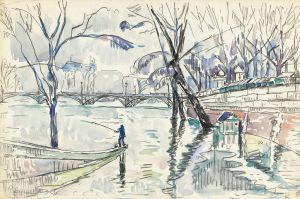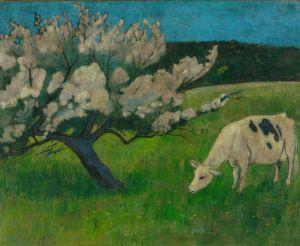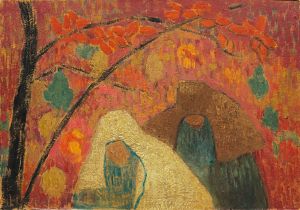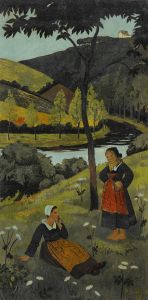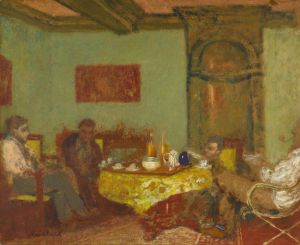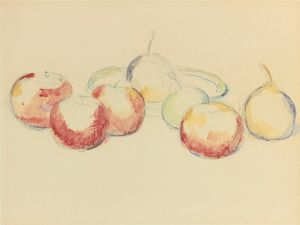
Paysage Breton, La Petite Anse
A hand-painted replica of Paul Sérusier’s masterpiece Paysage Breton, La Petite Anse, meticulously crafted by professional artists to capture the true essence of the original. Each piece is created with museum-quality canvas and rare mineral pigments, carefully painted by experienced artists with delicate brushstrokes and rich, layered colors to perfectly recreate the texture of the original artwork. Unlike machine-printed reproductions, this hand-painted version brings the painting to life, infused with the artist’s emotions and skill in every stroke. Whether for personal collection or home decoration, it instantly elevates the artistic atmosphere of any space.
Paul Sérusier's painting Paysage Breton, La Petite Anse (translated as Breton Landscape, The Little Cove) is an artwork created by the French Post-Impressionist painter Paul Sérusier. Sérusier, a prominent member of the Nabis group, was known for his innovative use of color and his role in advancing modern art during the late 19th and early 20th centuries.
The painting depicts a serene landscape in Brittany, a region in northwestern France that was a significant source of inspiration for Sérusier and many other artists of his time. Brittany's rural scenery, traditional culture, and unique light attracted numerous painters, including members of the Pont-Aven School, with which Sérusier was closely associated. The title of the painting, La Petite Anse (The Little Cove), suggests that the scene features a small coastal inlet, characteristic of the Breton coastline.
Sérusier's work in this painting reflects the influence of Paul Gauguin, whom he met in Pont-Aven in 1888. Gauguin's emphasis on bold, flat areas of color and symbolic representation had a profound impact on Sérusier's artistic style. This influence is evident in Paysage Breton, La Petite Anse, where Sérusier employs simplified forms and vibrant, non-naturalistic colors to convey the essence of the landscape rather than a realistic depiction. Such techniques align with the Nabis' philosophy of art as a means of expressing inner emotions and spiritual truths.
The exact date of creation for Paysage Breton, La Petite Anse is not definitively documented, but it is consistent with Sérusier's works from the late 19th century, a period when he was actively exploring the landscapes of Brittany and developing his distinctive style. The painting exemplifies the transition from Impressionism to more abstract and symbolic approaches in modern art.
As with many of Sérusier's works, Paysage Breton, La Petite Anse is celebrated for its innovative approach to composition and color. It captures the artist's vision of the natural world, filtered through his personal interpretation and the artistic principles of the Nabis movement. The painting is held in a private or public collection, though specific details about its current location or provenance are not widely available.
This artwork remains an important example of Sérusier's contribution to the development of modern art and his role in the broader context of Post-Impressionism and Symbolism.





